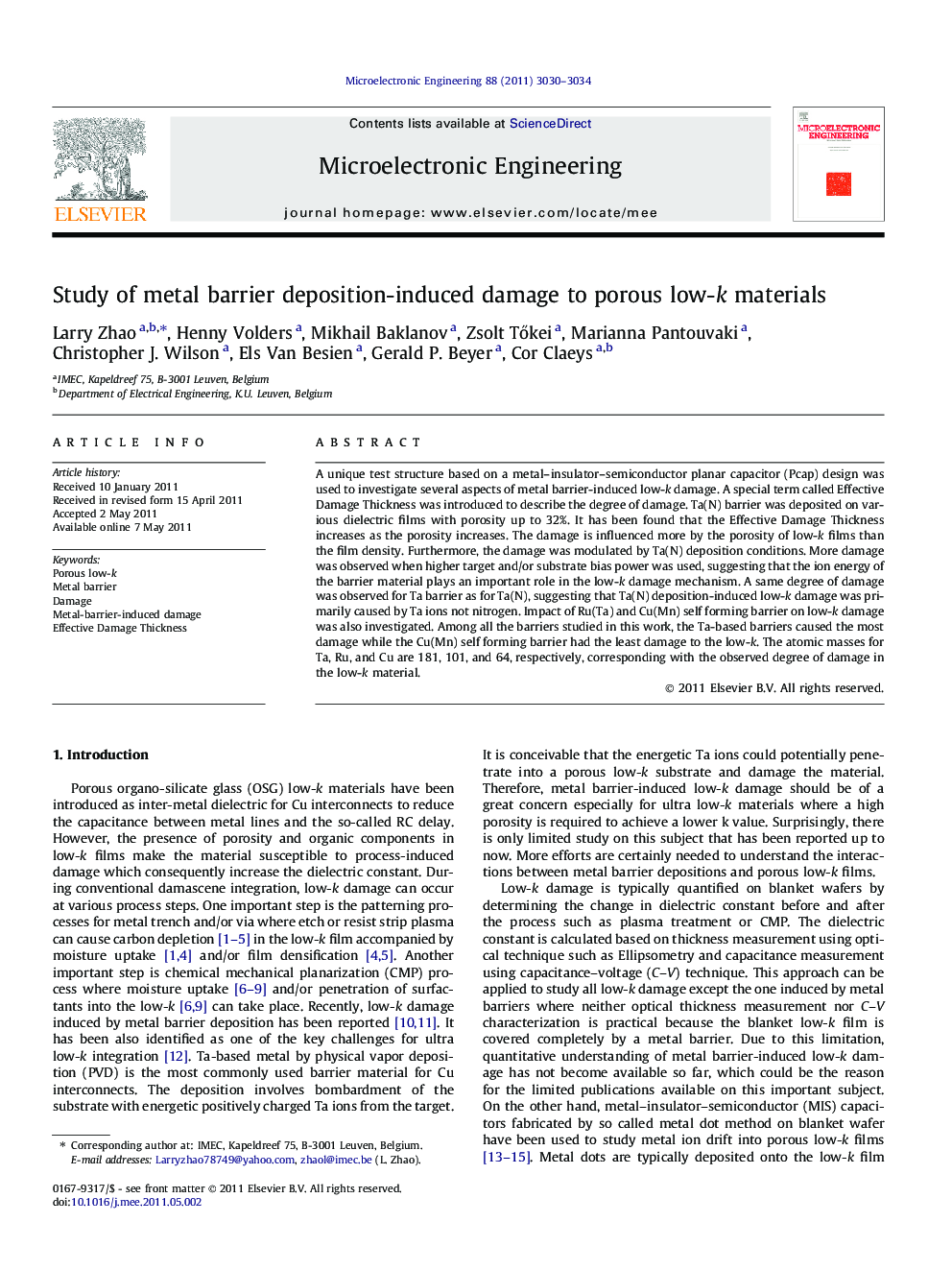| Article ID | Journal | Published Year | Pages | File Type |
|---|---|---|---|---|
| 539682 | Microelectronic Engineering | 2011 | 5 Pages |
A unique test structure based on a metal–insulator–semiconductor planar capacitor (Pcap) design was used to investigate several aspects of metal barrier-induced low-k damage. A special term called Effective Damage Thickness was introduced to describe the degree of damage. Ta(N) barrier was deposited on various dielectric films with porosity up to 32%. It has been found that the Effective Damage Thickness increases as the porosity increases. The damage is influenced more by the porosity of low-k films than the film density. Furthermore, the damage was modulated by Ta(N) deposition conditions. More damage was observed when higher target and/or substrate bias power was used, suggesting that the ion energy of the barrier material plays an important role in the low-k damage mechanism. A same degree of damage was observed for Ta barrier as for Ta(N), suggesting that Ta(N) deposition-induced low-k damage was primarily caused by Ta ions not nitrogen. Impact of Ru(Ta) and Cu(Mn) self forming barrier on low-k damage was also investigated. Among all the barriers studied in this work, the Ta-based barriers caused the most damage while the Cu(Mn) self forming barrier had the least damage to the low-k. The atomic masses for Ta, Ru, and Cu are 181, 101, and 64, respectively, corresponding with the observed degree of damage in the low-k material.
Graphical abstractFigure optionsDownload full-size imageDownload as PowerPoint slide
